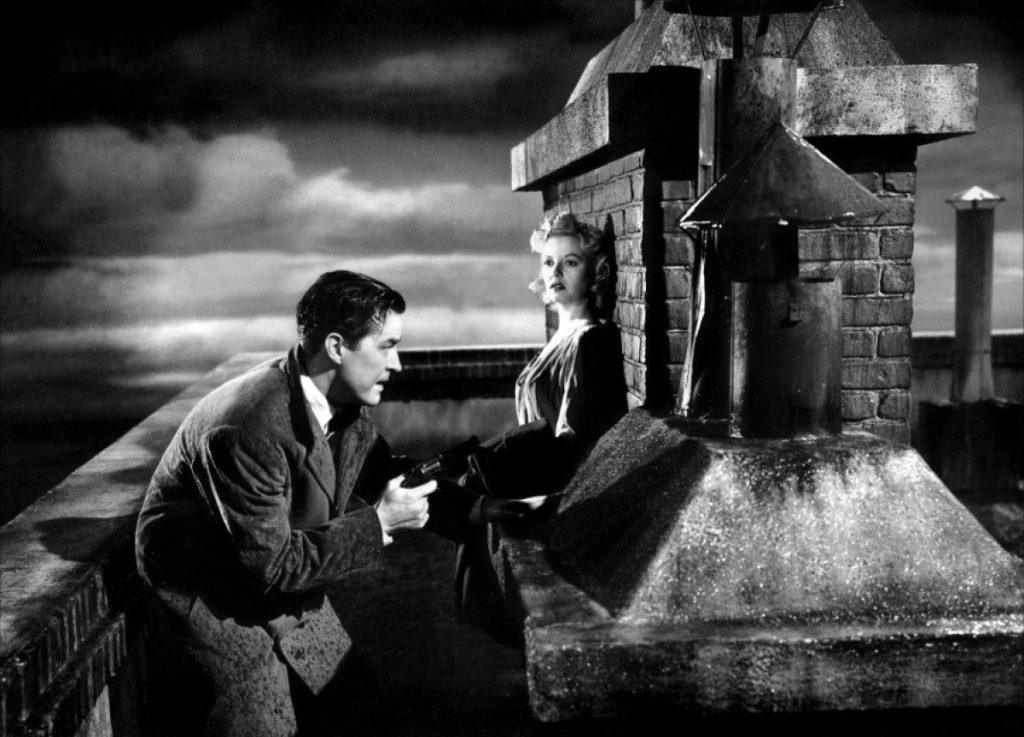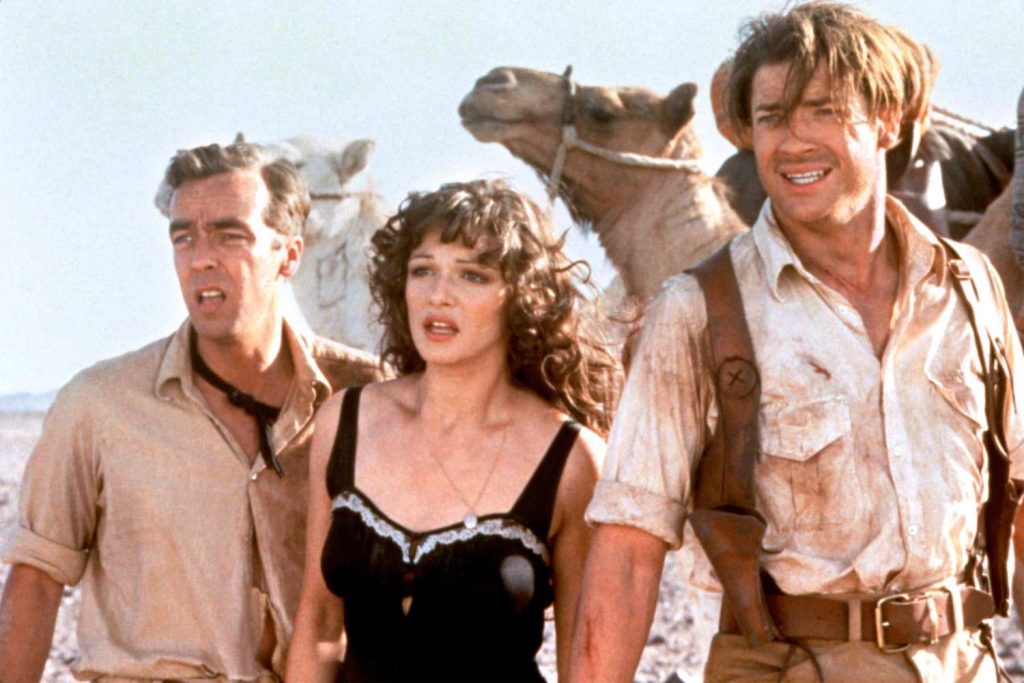Imagine an early 20th century drawing room, or alternatively, a fog-laden crypt. Suddenly from the shadows he emerges—a man with pale skin, dashingly tall and clad in a flowing cape, his booming, sonorous voice, piercing eyes and sly half-smile making his identity unmistakable: Dracula. This depiction of the character is undeniably tied to actor Bela Lugosi’s star-making turn in Universal Pictures’ 1931 version of Dracula, though it also applies to Universal’s second major cinematic adaptation of Bram Stoker’s novel in 1979, starring then-newcomer Frank Langella. However, neither of their iconic looks began with those films—instead, they have their origins in the 1920’s stage play adaptation, written by Hamilton Deane and John L. Balderston. Both Lugosi and Langella first portrayed Dracula in Broadway productions of the Deane/Balderston play, and both of their Universal Pictures adaptations used the play as their primary source rather than Stoker’s novel. As a result, both the 1931 and 1979 films have noticeably theatrical roots, their stage origins influencing not just the movies themselves but defining the portrayal and reputation of Dracula himself twice over.
Part of the reason the Deane/Balderston play became the basis for Universal’s Dracula is that it took the novel and gave its story a structural template. Stoker’s 1897 “Dracula” is famously epistolarian, and although its fictional letters, diary entries and the like are ordered chronologically, the number of locations and characters make it a bit unwieldy for translation to another medium. The first unofficial film adaptation, F.W. Murnau’s Nosferatu (1922), got around these issues by changing just about everything from the book besides its general plot. When Stoker’s widow, Florence, sought compensation from Murnau’s film via a legal dispute, Irish actor Deane was able to secure her permission to produce a stage adaptation of “Dracula” due to her need of funds. Deane’s play was mostly faithful to the novel, retaining the names and relationships of the major characters, but the plot was streamlined to take place entirely in England, set primarily in the house of Mina and Jonathan Harker. Following a successful run in Derby, England, the play was moved to Broadway by producer Horace Liveright, who hired Balderston to Americanize it. Balderston kept Deane’s economy of location and setting but further reduced the number of characters by combining them. The most notable change was to heroine Mina Harker, who was turned into Lucy Seward, switching names with Mina’s ill-fated best friend in the novel and made the daughter of Doctor Seward, who runs a sanatorium. All these changes turned Stoker’s “Dracula” into something like a game of telephone—the original concepts largely intact, with the details either economized or flipped around.
The most significant change to the “Dracula” novel, let alone the mythos, came with the portrayal of the Count himself. Stoker’s book took the vampire of folklore and made him a mysterious character with an undeniable magnetism, yet the novel makes sure to put an emphasis on his being an “other,” setting him apart from the “normal” (read: white and Anglo-Saxon). Nosferatu heightened this further, making that film’s Count Orlok a grotesque rat-like looking creature. But the Deane/Balderston play was structured around Dracula’s lengthy conversations with the cast in the Harker (or Seward) home, so a repulsive figure doing so would be too implausible. Thus, Dracula became more suave, dashing, and presentable, and those qualities would find their perfect match in Hungarian actor Bela Lugosi. Approached to play the role beginning in 1927, Lugosi’s run on stage caused such a sensation that its success caught the eye of Universal Pictures head Carl Laemmle Jr., who purchased the rights to the play in perpetuity in 1930. That choice—to own the rights to both the novel and the play—would prove fateful to Universal’s Dracula in many ways.

The 1931 film of Dracula was marketed by Universal as a premiere adaptation of Stoker’s novel, yet the Deane/Balderston play was really its template. Some elements of the book missing from the stage returned—there is a voyage to Transylvania at the beginning (albeit brief), the heroine is named Mina and her friend is named Lucy, and there are about five location changes in the film. However, the bulk of the action takes place either in the house of Dr. Seward (Herbert Bunston) or in Dracula’s new home of Carfax Abbey. Characters remain condensed from the play—Mina (Helen Chandler) is Seward’s daughter, and her fiancé is named John (David Manners), Lucy (Frances Dade) has a similarly revised last name, Weston, and Renfield (Dwight Frye) is given what in the novel is Jonathan Harker’s role of the solicitor who visits Transylvania, only to end up in his usual position as the bug-eating slave of the Count. Dracula (Lugosi) and Van Helsing (Edward Van Sloan) are left largely unchanged from the play, likely because Lugosi and Van Sloan were reprising their stage roles. Director Tod Browning has the film emulate the play: there are a few intertitles, Dracula’s transformation from man to bat is always off camera, and the bats themselves, along with fog effects and the like, are portrayed in ways that could also be done on stage. The movie has no musical score, possibly due to the notion that audiences might be confused about such music’s lack of on-screen origin (given the awkward period of transition from silents to talkies), but that choice also re-creates the effect the stage version would have had. The most theatrical effect the film has are the actors themselves, especially Lugosi, whose vigorous performance not only defined the character’s look and accent, but made him iconic.
Nearly a half-century later, history would virtually repeat itself, as another dashing young actor would play Dracula on stage and cause Universal to mount a second major adaptation of Stoker via the Deane/Balderston template. Broadway producer John Wolp had decided in 1977 to revive the ‘20s Dracula play, utilizing his friend Edward Gorey to create surreal sets and staging a production that emphasized the play’s camp factor. Frank Langella, however, played the character big but never for laughs (at his expense, anyway), and his take on Dracula as not just suave and charismatic but also an explicitly sexual, seductive being caused Universal to take note. With the success of Jaws (1975) proving to the studio that horror was hot again, a new film adaptation was made.

Director John Badham and writer W.D. Richter keep the play’s geographical economy intact, beginning the story with Dracula’s fateful arrival by ship to England and centering the action in and around Dr. Seward’s (Donald Pleasence) home and asylum (which are located in the same place) as well as Carfax Abbey; the movie only ventures away from these two locations for the finale at sea. The character makeup is largely the same as the play’s, with Lucy (Kate Nelligan) being the daughter of Seward and Jonathan Harker (Trevor Eve) being her fiancé, but this time her friend Mina (Jan Francis) is Mina Van Helsing, the daughter of Professor Van Helsing (Laurence Olivier), making her demise at Dracula’s fangs the reason for her father’s appearance. Those fangs, incidentally, are never seen—while his female victims display grotesque makeup, Langella insisted on never being seen on screen with fangs or blood on his lips, a choice that’s only noticeable after the fact given his dynamic performance, honed as it was on stage where such makeup changes were prohibited from occurring. While Badham’s film is generally a grounded affair, he still employs a good deal of theatrical in-camera effects, utilizing fog machines, bats on wires, and a laser system borrowed from The Who, employed in a highly stylized love scene designed by James Bond opening title creator Maurice Binder, supported by John Williams’ histrionic score. Dracula is never played for camp as its stage inspiration was, but there is one moment of fourth-wall breaking, where Langella’s Count crawls down a building and looks directly at camera, the vampire’s equivalent of winking at the audience.
Universal’s two major adaptations of Dracula not only created an icon and furthered his popularity, but affected every other use of the character in cinema. They transformed the outcast “other” of Stoker into first a Svengali-like dapper gentleman and later a Byronic hero, making the character more relatable with each iteration. Every screen Dracula owes a debt to a Universal Count: Christopher Lee’s turn in Hammer Studios’ 1958 adaptation is bombastic enough to succeed Lugosi, and Gary Oldman’s portrayal in Francis Ford Coppola’s 1992 version is even more sympathetic than Langella’s, making the Count a full-on tragically romantic figure. In the intervening 40 years since their ’79 Dracula, Universal has floundered on what to do with the Count (Dracula Untold, anyone?), yet they recently had a success with another of their Monsters, this year’s The Invisible Man. If they’re looking to bring Dracula back from the grave in a big way, perhaps they first need to mount a stage revival for inspiration.



